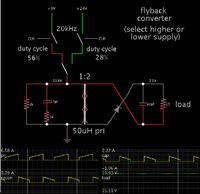erenkcms
Junior Member level 3

Hi Everybody,
I need isolated dc/dc converter. Input is 9-24VDC output is 15VDC,1A. how can i design this. and what should the transformers specs be?
if you have this kind of schematics, could you share with me?(erenkcms@hotmail.com)
This is so urgent for me, if anybody can help me, i wil be pleasure..
thanks everybody.
I need isolated dc/dc converter. Input is 9-24VDC output is 15VDC,1A. how can i design this. and what should the transformers specs be?
if you have this kind of schematics, could you share with me?(erenkcms@hotmail.com)
This is so urgent for me, if anybody can help me, i wil be pleasure..
thanks everybody.





